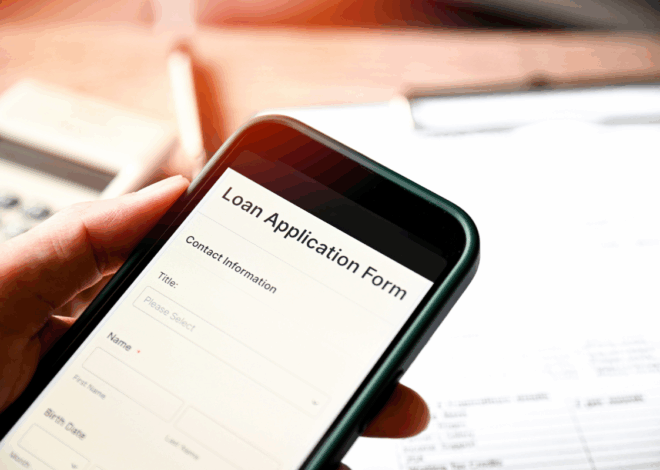
Bootstrap Your Side Hustle: Personal Loan Options for Singapore Entrepreneurs
In recent years, Singapore has witnessed a growing wave of entrepreneurial activity. Beyond the well-established start-up scene backed by venture capital and government grants, a quieter movement has been taking place: the rise of side hustles. From young professionals launching e-commerce stores to homemakers running baking businesses, and creative individuals offering freelance design or writing services, side hustles have become part of the city-state’s cultural fabric.
But starting even the smallest business requires money. Website hosting, marketing campaigns, raw materials, rental fees for shared kitchens or studios – these costs add up quickly. For many aspiring entrepreneurs, savings may not be enough to get things moving. This is where a personal loan can become a useful tool, offering a financial bridge that allows an idea to take shape without waiting years to accumulate capital.
This article explores how personal loans can support side hustles in Singapore, the advantages and risks involved, the types of financing available, and how to borrow responsibly.
The Side Hustle Culture in Singapore
The appeal of side hustles in Singapore is easy to understand. The city is known for its high cost of living – housing, healthcare, transport, and food all account for a significant share of monthly expenses. At the same time, wages do not always rise in line with inflation. Many Singaporeans therefore look to supplementary income streams as a way to build financial resilience.
A side hustle is often more than a financial buffer. It allows people to test their entrepreneurial spirit without giving up the security of a full-time job. Some eventually grow their projects into full-fledged businesses, while others are content with generating modest but steady extra income. Whether it is selling handmade jewellery on social media, tutoring students online, or running a digital marketing service, the possibilities are broad.
Yet almost all ventures face the same initial hurdle: funding. Even modest undertakings require some form of capital. This is where financing options come into the picture.
Why Consider a Personal Loan for a Side Hustle?
A personal loan is one of the most accessible financial products in Singapore. Unlike business loans, which may demand a track record of revenue or business registration documents, a personal loan is usually assessed on the basis of your income, credit history, and repayment ability. For side hustlers who are just starting out, this is often a more practical option than traditional business financing.
Here are some reasons why personal loans can be attractive for entrepreneurs:
- Quick access to capital – Applications are relatively straightforward, and disbursement can be fast, sometimes within a day or two.
- Flexibility – Funds are not restricted. You can use the loan to pay for inventory, marketing, training courses, or even rental deposits.
- Manageable repayment structure – Monthly instalments are fixed, which helps with budgeting and cash flow planning.
- No need for collateral – Unlike secured loans, personal loans typically do not require you to pledge property or assets.
For someone eager to test a business idea while keeping their day job, these features make personal loans an appealing choice.
The Risks of Financing a Side Hustle with a Loan
Of course, borrowing money comes with responsibilities. While personal loans can provide valuable breathing space, they also carry risks.
- Debt obligations – If your side hustle does not generate the expected income, you are still required to service the loan from your salary or other sources.
- Interest costs – Personal loan interest rates are generally higher than secured loans. Over time, this can significantly increase the cost of borrowing.
- Credit score impact – Missing payments can damage your credit record, making it harder to access future financing. To learn more about how credit affects borrowing, check this guide to understanding your credit card limit in Singapore.
- Emotional pressure – Carrying debt tied to a passion project may add stress, especially if your venture takes longer than anticipated to become profitable.
Entrepreneurs should carefully weigh these risks and avoid borrowing more than they can reasonably manage.
Types of Personal Loans Available in Singapore
When exploring loan options for your side hustle, it helps to understand what the market offers. Singapore has a well-regulated financial sector, giving borrowers multiple avenues.
1. Bank Personal Loans
Banks in Singapore provide some of the most competitive personal loan packages, particularly for borrowers with stable incomes and good credit scores. Interest rates can be lower than those from other providers, and repayment terms are flexible. However, banks tend to have stricter eligibility requirements, which may not suit everyone. If you’re a customer, sometimes even simple processes like requesting a card replacement can give you a sense of how banks handle service speed.
2. Credit Line or Balance Transfer Facilities
Instead of a lump sum, a credit line gives you access to funds you can draw upon when needed. This can be useful for side hustlers with fluctuating expenses, such as freelancers managing seasonal workloads. Balance transfers, meanwhile, help consolidate existing debt at lower rates, which could free up cash for business use.
3. Licensed Money Lenders
Not everyone qualifies for a bank loan, particularly if their credit history is less than perfect or their income is irregular. In such cases, a money lender Singapore offers another option. Licensed money lenders are regulated by the Ministry of Law, which caps interest rates and fees to protect borrowers. While rates are typically higher than banks, the approval process is usually faster and more flexible.
4. Government-Linked Schemes
Though primarily targeted at SMEs, some government initiatives, such as micro-financing support, can occasionally extend to very small ventures. However, eligibility criteria often require business registration and operational history, which side hustlers may lack in the early stages. For a foundation in financial knowledge, consider this beginner’s guide to T-Bills in Singapore.
How to Decide if a Personal Loan Is Right for Your Side Hustle
Borrowing should never be the default option. Before taking out a loan, ask yourself the following:
- What is the purpose of the loan? Be clear about whether you are using it for essential start-up costs, scaling operations, or bridging short-term cash flow gaps.
- Do I have a repayment plan? Calculate monthly instalments and ensure they fit comfortably within your existing budget.
- What is my risk tolerance? Consider how you would manage repayments if your side hustle generates little or no revenue for several months.
- Have I explored alternatives? Sometimes savings, small contributions from family, or reinvesting initial profits can be more sustainable than immediate borrowing.
If you’re hesitant, reading about why people fear loans and why they’re wrong might change your perspective.
Tips for Responsible Borrowing
If you decide that a personal loan is the right move, it pays to approach borrowing with discipline:
- Borrow only what you need – Avoid the temptation to take a larger loan simply because you qualify for it.
- Compare providers – Different banks and licensed lenders have varying rates, fees, and terms. Use online comparison tools to find the best fit.
- Read the fine print – Understand the total cost of borrowing, including processing fees, late payment charges, and early repayment penalties. Safeguarding yourself with insurance coverage can also help reduce financial risk.
- Maintain good records – Treat your side hustle like a business. Track income and expenses carefully so you know how instalment payments fit into your overall cash flow.
- Consider insurance or contingency funds – If possible, set aside savings or insurance to protect against unexpected disruptions like illness or job loss.
In today’s digital economy, smart payment solutions can also help. Entrepreneurs working with overseas clients might find travel e-wallets especially useful for cross-border transactions.
Realistic Scenarios of Using a Personal Loan
To put things into perspective, consider two common side hustle examples in Singapore:
- An Online Retail Store
A young professional wants to start selling niche lifestyle products online. She needs S$8,000 for stock, website development, and digital marketing. A personal loan allows her to purchase inventory upfront and run paid advertising campaigns. If sales build steadily, she can cover the repayments while growing her brand presence. - A Home Baking Business
A homemaker plans to sell customised cakes and pastries. Initial costs include baking equipment, packaging, and a deposit for a shared kitchen space. Instead of dipping into household savings, he takes a modest personal loan. The business generates consistent weekend orders, and within a year, he begins to reinvest profits, eventually repaying the loan ahead of schedule.
These examples show how personal loans, when used responsibly, can serve as stepping stones for entrepreneurs without significant starting capital.
Conclusion: Balancing Ambition with Prudence

Singapore’s side hustle culture is a testament to its people’s resilience and creativity. From e-commerce ventures to service-based freelancing, these enterprises provide not only extra income but also personal fulfilment and potential long-term growth.
A personal loan can be a powerful enabler, allowing entrepreneurs to bootstrap their way towards turning an idea into reality. However, it is not without its challenges. Careful planning, realistic expectations, and responsible borrowing are essential to ensure that debt becomes a tool rather than a burden.
For those who weigh their options wisely, borrowing can be the first step towards independence, innovation, and success. The key lies in striking the right balance between ambition and prudence.

